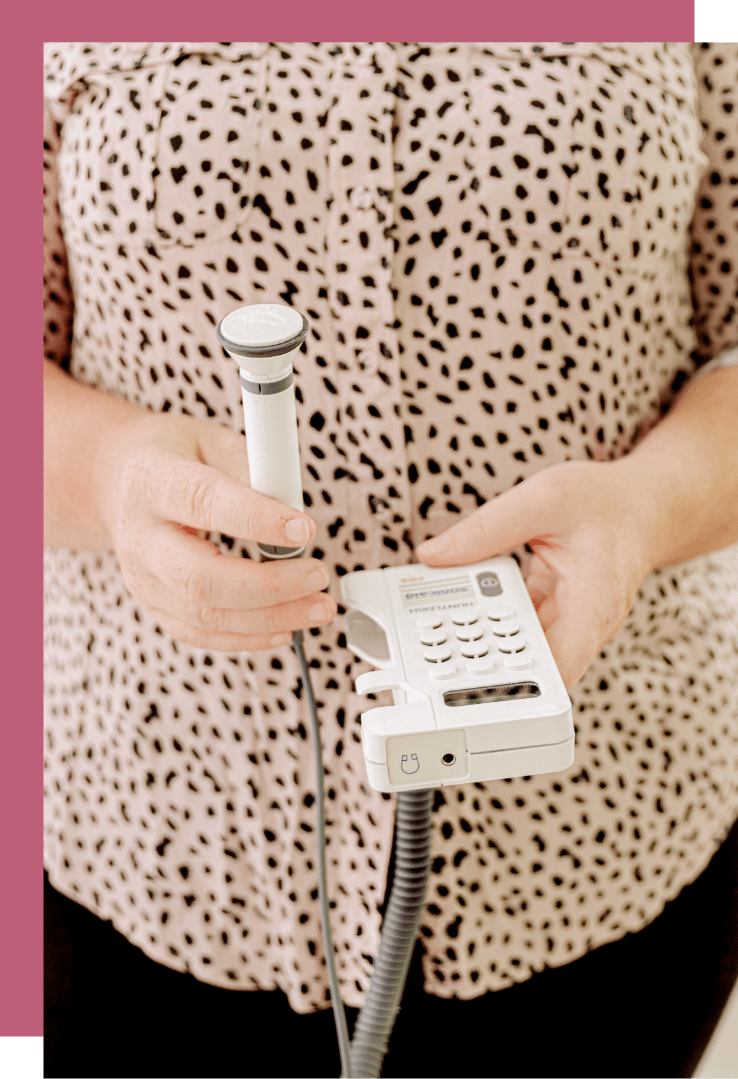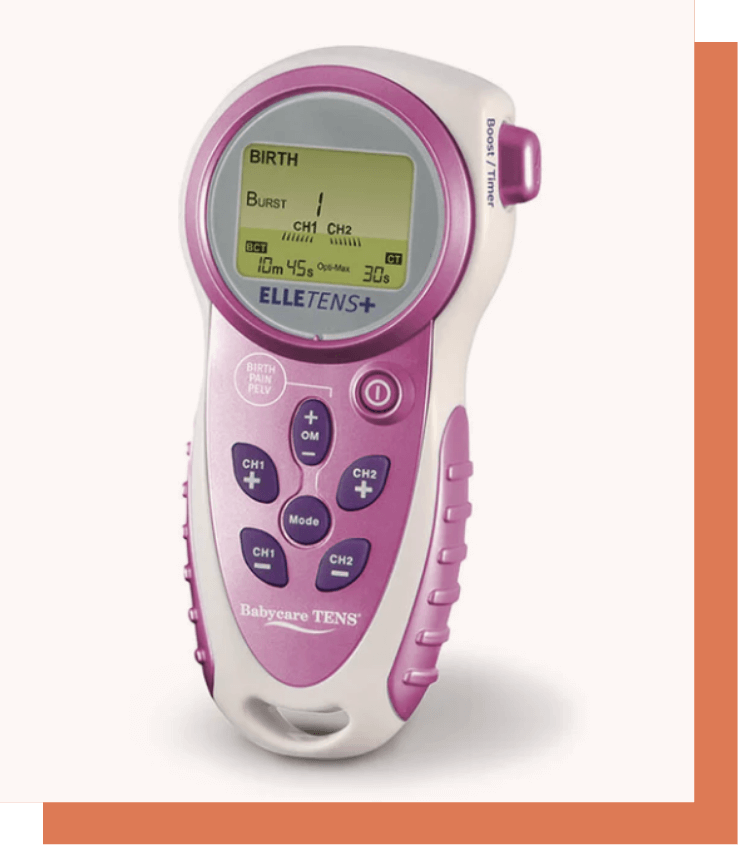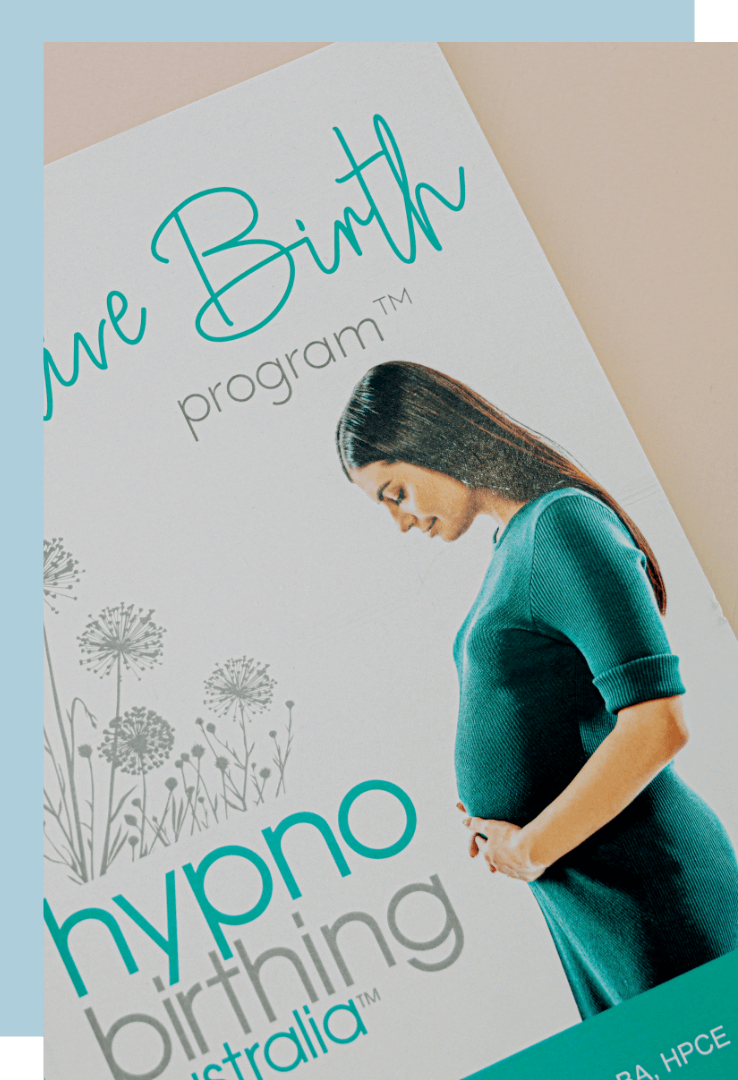Our
Resources
we have curated a collection of valuable resources to help you to make informed decisions and feel confident.
Midwifery resources

A midwife is a health professional specifically trained to care for women during their pregnancy, labour and post birth.
The role of a midwife is to provide evidence-based information and guidance to make informed decisions about the options available throughout the pregnancy, birth and post partum. Midwives are experts in normal physiological births and refer to other practitioners when required.
Initial Consultation: Let’s start by getting to know each other. In our first meeting, we’ll chat about your pregnancy, your health history, and what you envision for your birth experience. This helps us build trust and ensures I understand your unique needs and desires.
Continuity of Care: When you choose me as your midwife, you can count on consistent support from start to finish. Unlike the hospital, where you might see different faces at each appointment, I’ll be by your side every step of the way, offering personalized care that’s tailored just for you.
Prenatal Care: Throughout your pregnancy, we’ll have regular check-ups where we’ll monitor your health and your baby’s development. These appointments are all about you – we’ll discuss your nutrition, your exercise routine, and any questions or concerns you may have.
Birth Support: When it’s time for your baby to arrive, I’ll be there to support you, whether you choose to give birth at home, in a birth center, or in hospital. I’ll advocate for your birth preferences, provide comfort, and guide you through every step of the process.
Postpartum Care: After your little one is born, we then step into the next stage of support. I’ll continue to check in on you and your baby, offering support with breastfeeding, newborn care, and your own recovery. Think of me as your go-to resource for everything baby-related.
Educational Support: Throughout your pregnancy and beyond, I’ll arm you with the knowledge you need to feel confident and empowered. From childbirth education to parenting tips, I’ll be here to answer your questions and provide guidance every step of the way.
Together, we’ll navigate this journey with confidence and support.
Discussion and Collaboration: We’ll start by sitting down together to talk about your hopes, concerns, and expectations for your birth experience. This is your chance to share your preferences regarding pain management, labor positions, who you want present during birth, and any special considerations you have.
Personalized Care: Your birth plan is just that – yours. I’ll work closely with you to ensure that your plan reflects your individual needs and desires. Whether you’re dreaming of a water birth, want to incorporate certain cultural or religious traditions, or have specific requests for postpartum care, your preferences will be at the forefront.
Flexibility and Adaptability: While a birth plan is a helpful guide, it’s important to remember that labor and birth can be unpredictable. I’ll help you prepare for various scenarios and empower you to make informed decisions along the way. Your birth plan can be adjusted as needed to accommodate any changes or unexpected developments.
Communication with Healthcare Providers: Once your birth plan is finalized, I’ll work with you to ensure that your preferences are communicated effectively to the rest of your healthcare team. This helps ensure that everyone is on the same page and working together to support you and your baby during labor and delivery.
Continuous Support: Throughout your labor and birth, I’ll be by your side, advocating for your preferences and providing comfort and guidance every step of the way. Whether you’re laboring at home, in a birth center, or in hospital, I’ll support you in achieving the birth experience you desire.
The postnatal period, also known as the postpartum period, is a time of adjustment and recovery for both you and your baby. Here are some essential tips for looking after yourself during this special time:
Rest and Recovery: Your body has just undergone a significant physical and emotional journey, so it’s essential to prioritize rest and recovery. Allow yourself time to rest whenever possible, and don’t hesitate to ask for help from friends, family, or your support network.
Nutrition and Hydration: Eating well and staying hydrated are crucial for your physical and emotional well-being during the postnatal period. Focus on nourishing, nutrient-rich foods, and drink plenty of water to stay hydrated, especially if you’re breastfeeding.
Emotional Well-being: The postnatal period can bring a range of emotions, from joy and excitement to anxiety and overwhelm. It’s essential to prioritize your emotional well-being during this time. Reach out for support if you’re feeling overwhelmed or struggling emotionally, whether it’s from your partner, a friend, or a mental health professional.
Gentle Exercise: While it’s essential to rest and recover, gentle exercise can also be beneficial during the postnatal period. Activities like walking, yoga, or gentle stretching can help improve circulation, reduce stress, and boost your mood. Always consult with your healthcare provider before starting any exercise routine.
Self-care: Don’t forget to prioritize self-care during the postnatal period. Take time for yourself to do things that make you feel good, whether it’s taking a relaxing bath, reading a book, or simply enjoying a cup of tea. Remember, taking care of yourself is just as important as taking care of your baby.
Seeking Support: Don’t hesitate to reach out for support if you need it. Whether it’s practical help with household chores, emotional support from a friend, or guidance from a healthcare professional, there are resources available to support you during the postnatal period.
Recovering from a caesarean section, also known as a C-section, requires special attention and care. Here are some important tips for physical care during the postoperative period:
Follow Your Healthcare Provider’s Instructions: Your healthcare provider will provide specific instructions for caring for your incision and managing pain after your C-section. It’s essential to follow these instructions carefully to promote healing and reduce the risk of complications.
Managing Pain: It’s normal to experience some discomfort or pain after a C-section. Your healthcare provider may prescribe pain medication to help manage this discomfort. Take your medication as directed and let your provider know if you’re experiencing any unusual or severe pain.
Caring for Your Incision: Keep your incision clean and dry to prevent infection. Your healthcare provider will provide instructions on how to clean and care for your incision, including when to remove any dressings or bandages. Watch for signs of infection, such as increased redness, swelling, or drainage from the incision, and contact your provider if you notice any concerning symptoms.
Rest and Recovery: Allow yourself plenty of time to rest and recover after your C-section. Avoid strenuous activities, heavy lifting, and driving until your healthcare provider gives you the all-clear. Listen to your body and give yourself permission to take it easy as needed.
Supportive Garments: Your healthcare provider may recommend wearing supportive garments, such as a belly binder or abdominal support belt, to provide additional support to your abdomen as it heals. Follow your provider’s recommendations regarding the use of these garments.
Gradual Return to Activity: As you start to feel better, gradually reintroduce light physical activity into your routine. Start with gentle walks around the house or neighborhood and gradually increase the intensity and duration as tolerated. Avoid high-impact activities or heavy lifting until your healthcare provider gives you the green light.
Emotional Support: Recovering from a C-section can be physically and emotionally challenging. Be gentle with yourself and allow yourself time to process your birth experience. Lean on your support network for emotional support, whether it’s from your partner, family, friends, or a support group.
Remember, everyone’s experience after a C-section is unique. Listen to your body, follow your healthcare provider’s guidance, and give yourself the time and space you need to heal and recover fully.
Pelvic floor exercises, also known as Kegel exercises, are incredibly beneficial for women, especially during pregnancy and after childbirth. Here’s some information on how to perform pelvic floor exercises effectively:
Locating Your Pelvic Floor Muscles: Before you can start doing pelvic floor exercises, it’s essential to locate the muscles you’ll be working. The easiest way to do this is to imagine that you’re trying to stop the flow of urine mid-stream. The muscles you engage to do this are your pelvic floor muscles.
Performing Pelvic Floor Exercises: Once you’ve located your pelvic floor muscles, you can start doing pelvic floor exercises. To do a Kegel exercise, simply squeeze and lift your pelvic floor muscles as if you’re trying to stop the flow of urine. Hold the contraction for a few seconds, then release and relax. Aim to do 10-15 repetitions, 3-4 times a day.
Focus on Technique: When doing pelvic floor exercises, focus on isolating and engaging the pelvic floor muscles without tensing your abdomen, buttocks, or thighs. It’s important to maintain normal breathing during the exercises and avoid bearing down or holding your breath.
Consistency is Key: Like any exercise, consistency is key to seeing results. Make pelvic floor exercises a regular part of your daily routine, and you’ll likely start to notice improvements in pelvic floor strength and function over time.
Incorporate Into Daily Activities: Pelvic floor exercises can be done discreetly almost anywhere, so try incorporating them into your daily activities. You can do Kegels while sitting at your desk, waiting in line, or watching TV.
Benefits of Pelvic Floor Exercises: Pelvic floor exercises offer numerous benefits, including improving bladder control, preventing or treating pelvic organ prolapse, enhancing sexual function, and promoting faster recovery after childbirth.
Seeking Guidance: If you’re unsure whether you’re performing pelvic floor exercises correctly or if you have specific concerns about your pelvic floor health, consider seeking guidance from a pelvic health physiotherapist or healthcare provider. They can assess your pelvic floor function and provide personalized advice and exercises tailored to your needs.
Remember, pelvic floor exercises are an essential part of maintaining pelvic health, especially during and after pregnancy. By incorporating them into your routine and staying consistent, you can support your pelvic floor function and overall well-being.
Preparing for a homebirth involves gathering essential supplies and creating a comfortable, safe environment for you and your baby’s arrival. Here’s a checklist of items you may need for a homebirth:
Birth Kit: Many midwives provide a birth kit that includes essential supplies for the birth. This may include items such as sterile gloves, sterile gauze pads, cord clamps, and other medical supplies.
Clean Towels and Linens: Have plenty of clean towels, washcloths, and sheets on hand for the birth. These can be used for comfort, warmth, and cleanliness during and after the birth.
Disposable Underpads or Waterproof Sheets: Protect your mattress and furniture with disposable underpads or waterproof sheets. These can help contain any messes and make cleanup easier.
Comfortable Birth Space: Create a comfortable and relaxing birth space in your home. This may include dim lighting, soft music, and comfortable seating or pillows for support.
Birth Pool or Tub (Optional): If you’re planning a water birth, you’ll need a birth pool or tub large enough to comfortably accommodate you during labor and birth. Make sure to set up the pool or tub in advance and fill it with clean, warm water.
Healthy Snacks and Drinks: Keep nutritious snacks and drinks on hand to stay hydrated and energized during labor. Items like fruit, nuts, granola bars, and electrolyte drinks can provide quick energy and nourishment.
Supportive Birth Team: Surround yourself with a supportive birth team, including your partner, family members, friends, and midwife or doula. Their presence and encouragement can make a significant difference during labor and birth.
Emergency Supplies: While rare, it’s essential to have emergency supplies on hand in case of unexpected complications. This may include a charged phone for calling emergency services, a flashlight, extra blankets for warmth, and a first aid kit.
Postpartum Supplies: Don’t forget about postpartum care! Stock up on items like maternity pads, peri bottles for cleaning, and comfortable clothing for after the birth.
Birth Plan: Have a written birth plan that outlines your preferences for labor, birth, and postpartum care. Share this plan with your birth team so everyone is on the same page.
Remember to discuss your homebirth plans with your midwife or healthcare provider well in advance to ensure a safe and supported birth experience. With careful planning and preparation, a homebirth can be a beautiful and empowering option for welcoming your baby into the world.
Exercise during the antenatal (pregnancy) and postnatal (after childbirth) periods is important for maintaining physical and mental well-being. Here’s how to approach exercise during each stage:
Antenatal Exercise (During Pregnancy):
Consult Your Healthcare Provider: Before starting any exercise program during pregnancy, it’s essential to consult with your healthcare provider to ensure it’s safe for you and your baby. They can provide personalized advice based on your medical history and current health status.
Choose Safe Activities: Opt for low-impact exercises that are safe for pregnancy, such as walking, swimming, prenatal yoga, or stationary cycling. These activities help improve cardiovascular fitness, strength, flexibility, and posture without putting excessive strain on your joints.
Listen to Your Body: Pay attention to your body’s cues during exercise. If something feels uncomfortable or painful, stop and rest. Avoid activities that involve lying flat on your back after the first trimester, as this can restrict blood flow to your baby.
Stay Hydrated and Cool: Drink plenty of water before, during, and after exercise to stay hydrated. Exercise in a cool environment and dress in breathable, loose-fitting clothing to prevent overheating.
Modify as Needed: As your pregnancy progresses, you may need to modify your exercise routine to accommodate your changing body. Focus on exercises that are gentle and comfortable, and avoid high-impact activities or exercises that increase the risk of falls or injury.
Pelvic Floor Exercises: Incorporate pelvic floor exercises, also known as Kegels, into your routine to strengthen the muscles that support your bladder, uterus, and bowel. Strong pelvic floor muscles can help prevent urinary incontinence and support your pelvic organs during pregnancy and childbirth.
Postnatal Exercise (After Childbirth):
Wait for Clearance: Wait until you’ve received clearance from your healthcare provider before resuming exercise after childbirth. This typically occurs around 6 weeks postpartum for uncomplicated vaginal births and may be longer for cesarean births or if you experienced complications.
Start Slowly: Ease back into exercise gradually, starting with gentle activities like walking or postnatal yoga. Focus on rebuilding strength, flexibility, and endurance at a pace that feels comfortable for your body.
Core and Pelvic Floor Recovery: Pay special attention to rebuilding strength in your core and pelvic floor muscles, which may have been weakened during pregnancy and childbirth. Incorporate exercises specifically targeting these areas, such as pelvic tilts, abdominal bracing, and pelvic floor exercises.
Be Mindful of Diastasis Recti: If you have diastasis recti, a separation of the abdominal muscles, avoid exercises that can exacerbate the condition, such as traditional crunches or sit-ups. Instead, focus on gentle core-strengthening exercises recommended by a physical therapist or postnatal fitness specialist.
Listen to Your Body: As always, listen to your body and honor its signals during postnatal exercise. If you experience pain, fatigue, or discomfort, take a break and rest. It’s essential to prioritize your own recovery and well-being as you adjust to life with a new baby.
Seek Support and Guidance: Consider working with a postnatal fitness specialist or physical therapist who can provide guidance and support as you navigate postpartum exercise. They can help you develop a safe and effective exercise program tailored to your needs and goals.
Remember that every woman’s postnatal recovery journey is unique, so be patient and gentle with yourself as you rebuild strength and stamina after childbirth. By prioritizing safe and appropriate exercise, you can support your physical and mental well-being during the postnatal period.
Tens hire
tens is an effective, natural pain relief option during labour and is perfectly safe for you and your baby.
$150 including $50 deposit refunded on return

Hypnobirthing resources
Access additional resources and MP3 tracks specific to your circumstances from Australia's #1 hypnobirthing childbirth education course.

The next best thing to attending face-to-face classes. Access straight away on a secure online learning platform 24/7. Also access the course from the comfort of your own home and at a time to suit you.
$199 VIA HYPNOBIRTHING AUSTRALIA
The next best thing to attending face-to-face classes. Access straight away on a secure online learning platform 24/7. Also access the course from the comfort of your own home and at a time to suit you.
Plus, the option of an additional 90 minute one on one or 3hr one on one. This can be formatted specifically to what you want. For 90 minute one on one $349 or 3 hr one on one $499.
Specifically designed for women planning a Cesarean Section and wanting to achieve a calm and positive birth. Includes 4 hours of face to face tuition in the comfort of your home, $120 worth of Certified Hypnobirthing Australia™ Positive Cesarean materials including a comprehensive folio of resources, practice self-hypnosis MP3s and beautiful affirmations MP3 and ongoing support from Katie until your birth.
$395 CONTACT US
This great value bundle includes MP3s, the little book of hypnobirthing eBook and a discount off face to face or online classes if you decide to upgrade.
$59 VIA LEARN MORE
An exclusive Hypnobirthing Australia™ deep self-hypnosis track. Teaches you to completely relax and let go of any fears and reservations that could be holding you back from experiencing the joyful birth you deserve.
$15 LEARN MORE
A professionally guided self-hypnosis track designed for use during childbirth.
$17 LEARN MORE
Designed to compliment the resources already included in the Hypnobirthing Australia™ course and includes additional MP3s and an eBook.
$49 LEARN MORE
Provides high quality videos by expert Dr Kate Lovett, demonstrating acupressure points and massage techniques for pregnancy and birth.
$39 LEARN MORE
